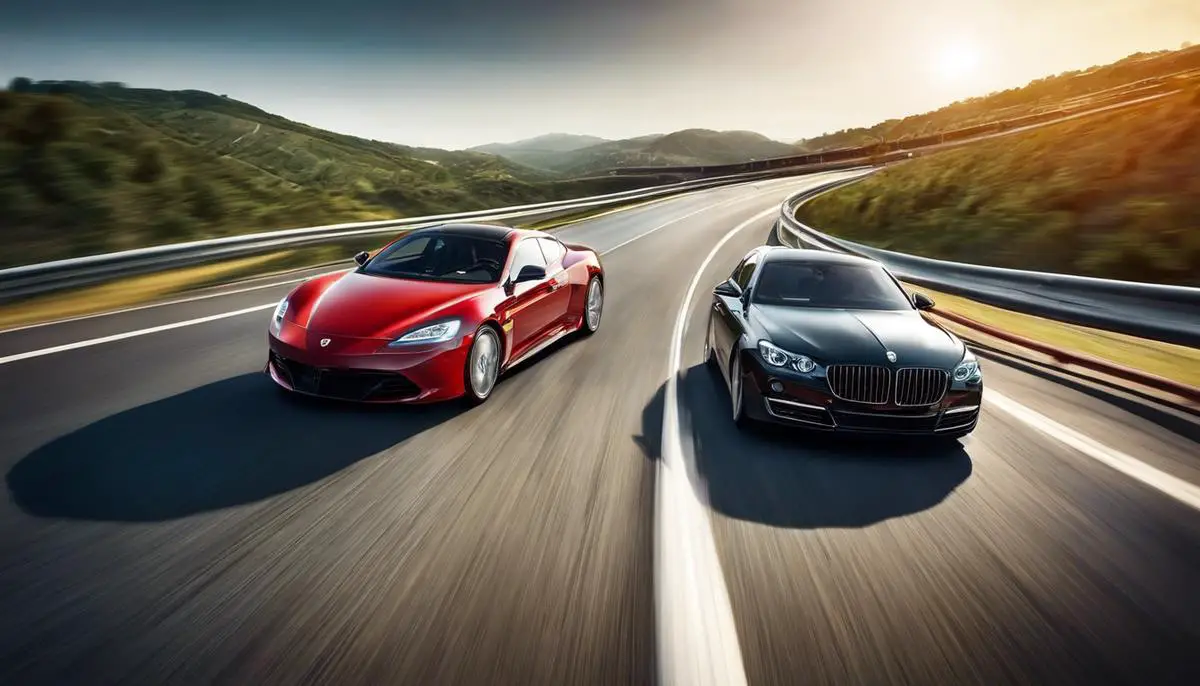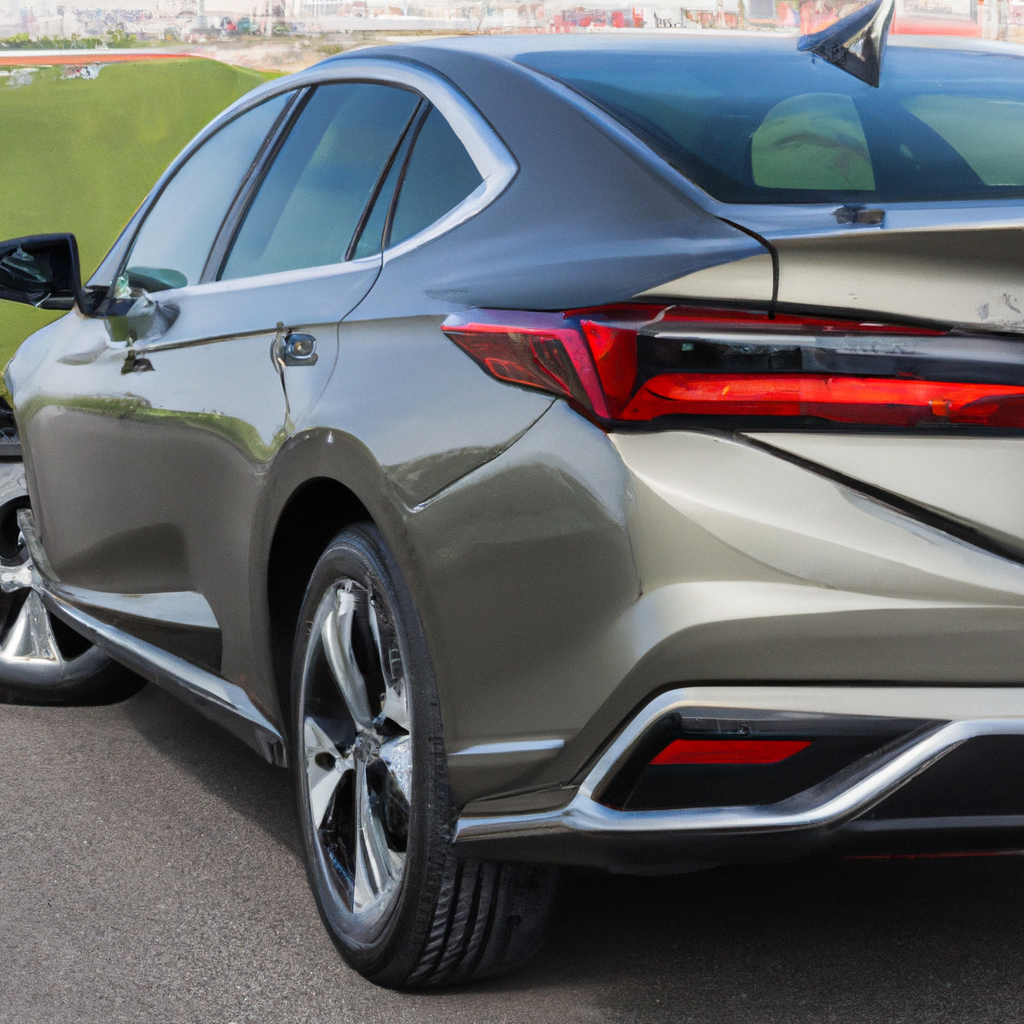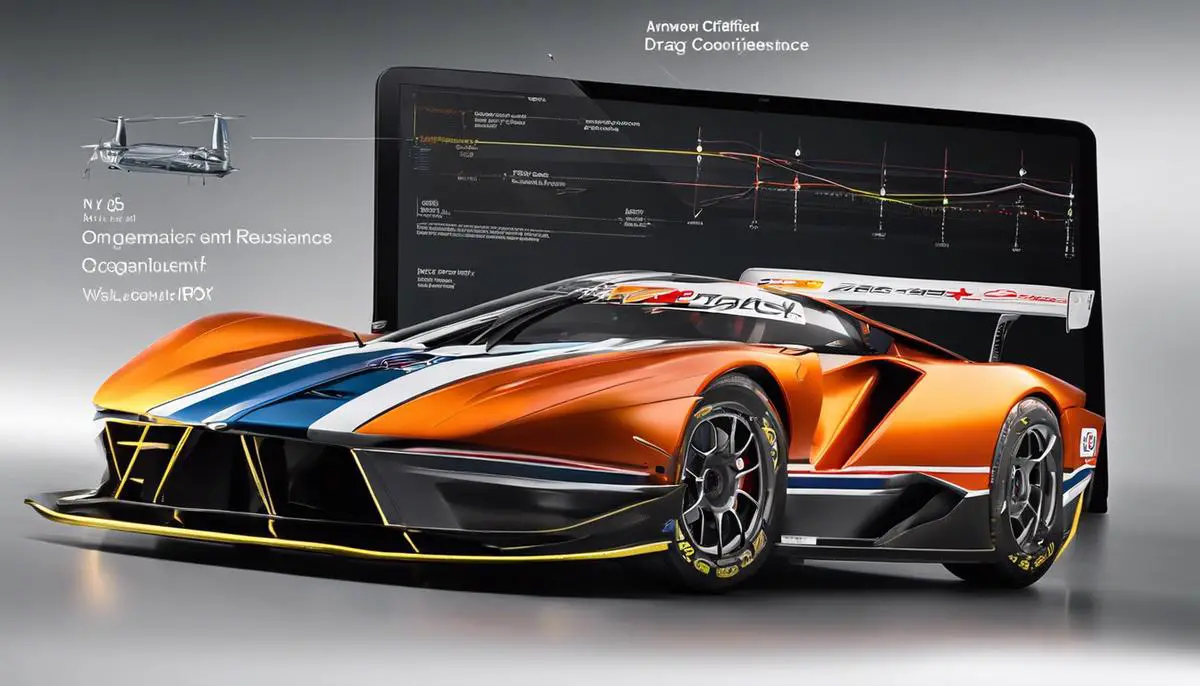Weight distribution, suspension tuning, aerodynamics, and tire dynamics collectively orchestrate a vehicle's performance on the road. Each element plays a critical role in how a car handles, accelerates, and brakes, contributing to the overall driving experience.
Weight Distribution
Weight distribution plays a crucial role in how a car maneuvers on the road, influencing everything from the car's responsiveness to its grip during tight turns. Cars with an even 50/50 weight distribution between the front and rear axles are in the optimal position for handling. This setup means the vehicle's center of gravity is well-centered, making cornering smoother; each tire holds the road with equal effort, significantly reducing the chances of spinning out during aggressive maneuvers.
If the weight is evenly spread, the car will move more predictably because each wheel works just as hard to maintain traction. This could make or break performance in high-speed or even daily driving scenarios.
However, achieving this balance isn't straightforward. Engine placement, fuel tank location, battery positioning in electric vehicles, and even passenger seating influence distribution. Engineers juggle these elements to fine-tune a vehicle's weight distribution for better handling without compromising safety or comfort.
Machines with more weight upfront, often seen with front-engine configurations, might exhibit a tendency to understeer. This is where the car prefers to go straight rather than carving out the turn as the driver intends. While some understeer is safer for average drivers, as it's more controllable, minimizing it through better weight distribution can lead to a more engaging driving experience.
Conversely, cars with more weight at the rear can face oversteer, which could spell excitement or trouble if not careful. Racecar drivers might prefer this for quicker pivots and turns, but it requires skill to manage. Balancing weight reduces dramatic oversteer tendencies, offering a blend of safety and excitement.
In sports cars and performance-focused machines, meticulous attention to weight distribution sets the excellent apart from the merely good. Proper weight allocation allows drivers to push their cars faster, taking corners confidently without undue drama.
Advanced technologies and adjustable suspension systems have come into play, allowing drivers to alter a car's dynamics on the fly, further emphasizing the importance of weight distribution. Adjusting ride height, stiffness, and damping can redistribute how weight shifts during acceleration, braking, and cornering, tailoring the balance according to the driver's desires or road conditions.
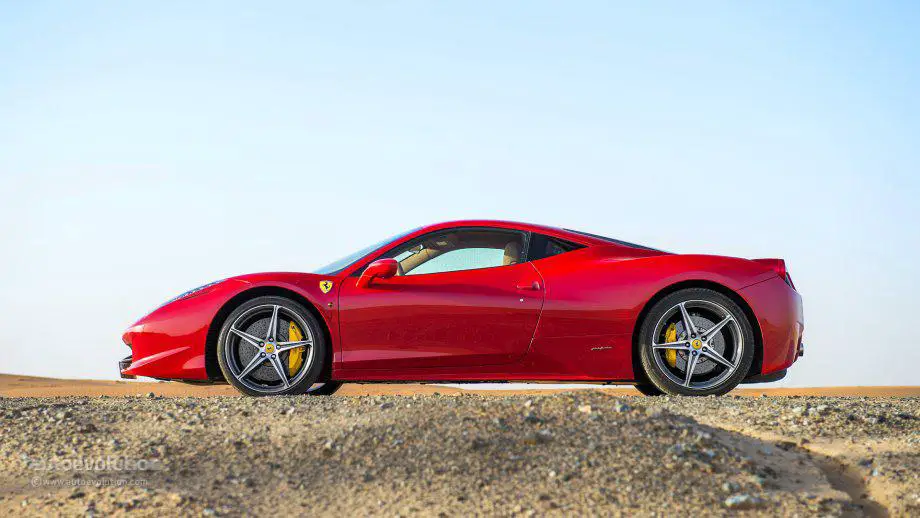
Suspension Tuning
Beyond the equilibrium offered by ideal weight distribution, suspension tuning represents another pivotal aspect of vehicle dynamics. This network of springs, dampers, sway bars, and more doesn't just soften bumps; it orchestrates the forces acting upon a vehicle in motion.
Suspension systems keep all four tires engaged with the road's surface, providing the necessary friction for maneuvers. Tuning this system harmonizes with both the vehicle's character and its driver's demands.
Springs dictate the vehicle's ride height and, along with shock absorbers or dampers, determine how much the car pitches and rolls. A softer setup will provide a comfortable ride over irregular terrains but might be too soft when cornering at speed, as the body leans excessively, shifting weight away from the inside wheels. Conversely, a stiffer setup minimizes body roll, keeping weight more evenly distributed; ideal for performance driving but potentially uncomfortable on less forgiving roads.
Adjusting suspension stiffness involves balancing spring rates, shock tuning, and respecting the laws of physics. Increasing front stiffness to reduce understeer or stiffening the rear to combat oversteer might seem straightforward but becomes complex in practice.
Suspension geometry, including camber, caster, and toe, is also paramount in defining a vehicle's handling. Camber angle influences tire contact during leans, caster aids in stability and cornering, and toe settings affect directional stability and tire wear patterns.
Sway bars, linking the left and right wheels, resist the car's lean in turns, redistributing forces to keep tires grounded. Their stiffness also influences oversteer or understeer characteristics.
Navigating suspension tuning elevates a car's performance and comfort. It's not just about turning wrenches; it's a philosophized approach to each chassis and driver, examining torsional rigidity, wheel hop, damping rates, and spring oscillations.
In this ballet of precision tuning, keeping equilibrium amid different driving demands creates the perfect setup — where science meets satisfaction in every turn.

Aerodynamics
Aerodynamics is a profoundly influential aspect of high-speed automobile performance. While sleek lines and audacious spoilers catch the eye, the enthusiast sees the meticulous crafting of airflow that decisively impacts a car's balance and handling. Aerodynamics doesn't just sculpt cars that cut through the air; it molds vehicles that embrace the road with tightened grip and stability at high speeds.
The spoiler, often seen as an aesthetic appendage, plays a pivotal role in altering the car's aerodynamic profile. By disrupting airflow patterns, spoilers reduce lift at higher speeds. This channels more downforce onto the rear tires, enhancing traction when critically needed.
Simultaneously, downforce has its counterpart, drag, which adversely affects acceleration and fuel efficiency. Car design aims to embrace downforce while minimizing drag, crafting shapes that beckon speed without being ensnared by its retarding effects. Splitters, venturis, and sleek curvatures manage the atmosphere's embrace.
Beneath the car, the diffuser channels fast-moving underbody air to merge more harmoniously with slower rear airstreams, creating a vacuum that ushers the vehicle closer to the ground. This amplifies stability and transforms the vehicle into a road-clinging machine that pivots with less sway and improved precision.
The overall shape of the vehicle, with sleek contours and rounded edges, minimizes air vortices that could buffet against the car's stability. The width, height, and stance are deliberated with aerodynamics in mind, aiming for a form that navigates the air efficiently.
Aerodynamics serves both speed and balance. Whether it's a gentle cruise demanding fuel efficiency or a push towards high performance, each draft navigated and pocket of turbulence tamed is an affirmation of aerodynamics' central doctrine — maintaining an equilibrium that marries efficiency with exhilarating performance.
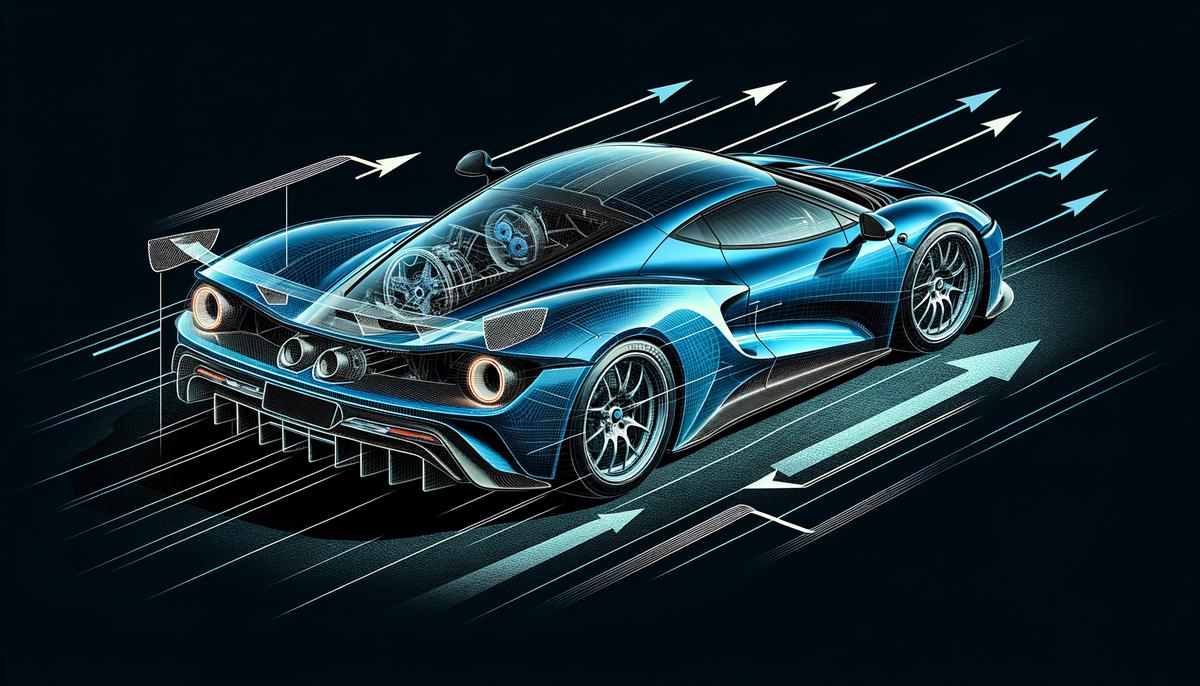
Tire Dynamics
Tires play a critical role in a car's balance, translating theories of weight distribution, suspension tuning, and aerodynamics into reality. Tires, in their deceptive simplicity, clinch the perfect balance between grip and grace under the laws of physics.
Tire dynamics involve size, pressure, and tread pattern, dictating how a car corners, accelerates, or brakes on varying terrains. Tires convert complex mechanical energies into lateral forces and grip that adhere the vehicle to the road.
Wider tires offer a larger contact area with the road, providing more grip crucial for cornering at the limits. However, this increased grip comes with increased resistance, resulting in performance tweaks to balance speed and control.
Tire pressure affects ride comfort and grip. Too high a pressure reduces the contact patch, diminishing grip and creating a harsher ride. Too low pressure increases grip but at the expense of heightened resistance and wear. The pressure needs to be just right, guided by vehicle load and intended use.
Tread pattern, with its channels and grooves, acts against hydroplaning by channeling water away from the tire's base, preserving grip on wet roads. The design also maximizes rubber-to-road contact in dry conditions, catering to agility and steadfastness.
Tire dynamics ensure that regardless of conditions, the car remains an extension of the driver's intentions. At high speeds into sharp turns or sudden stops, it's ultimately the capability of those four patches of rubber to translate mechanical marvels into motion or deceleration.
Harnessing tire parameters secures that every turn becomes a testament to balance – where forces of nature meet human ingenuity on the road. It is in the whirl of spinning wheels that a car finds its equilibrium, pushing boundaries while bound by friction.
The equilibrium between grip and grace underpins a vehicle's performance, with tire dynamics serving as the critical interface between the car and the road. This balance ensures that a car remains an extension of the driver's intentions, offering a blend of speed and stability.
- Milliken WF, Milliken DL. Race Car Vehicle Dynamics. Warrendale, PA: SAE International; 1995.
- Gillespie TD. Fundamentals of Vehicle Dynamics. Warrendale, PA: Society of Automotive Engineers; 1992.
- Hucho WH, ed. Aerodynamics of Road Vehicles: From Fluid Mechanics to Vehicle Engineering. 4th ed. Warrendale, PA: Society of Automotive Engineers; 1998.
- Pacejka HB. Tire and Vehicle Dynamics. 3rd ed. Oxford, UK: Butterworth-Heinemann; 2012.
